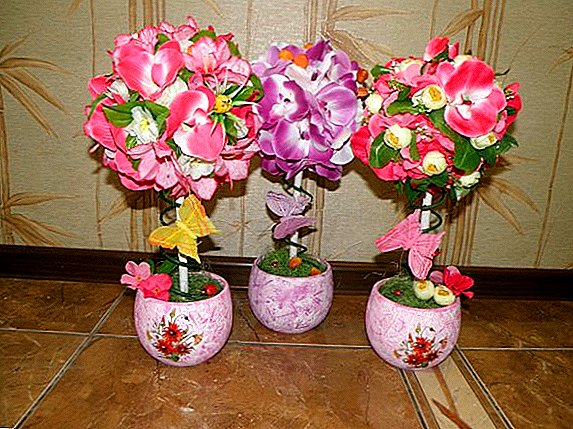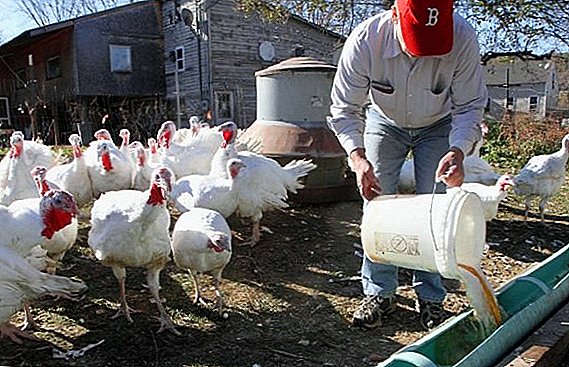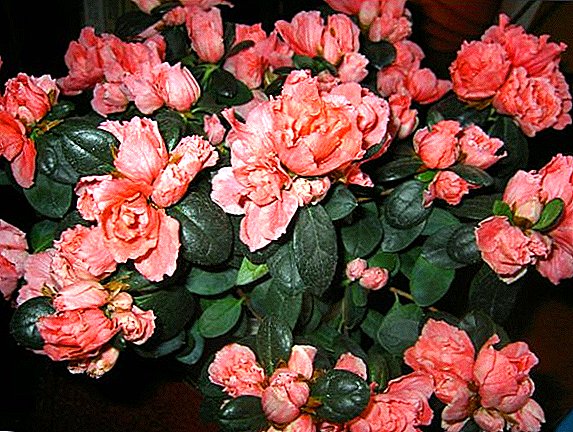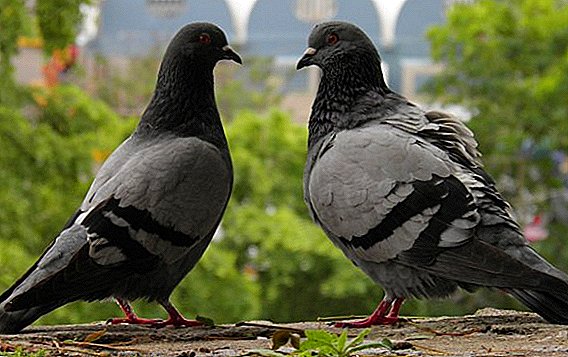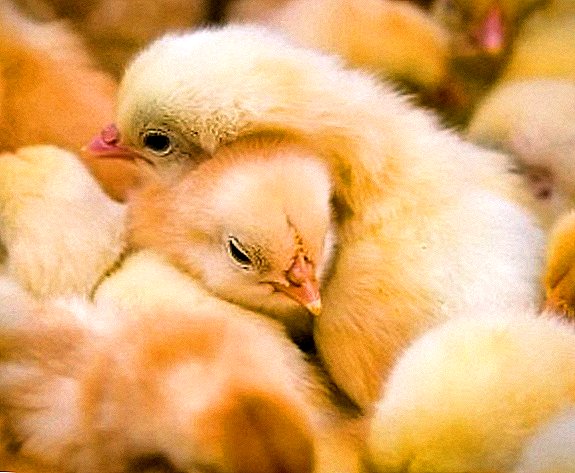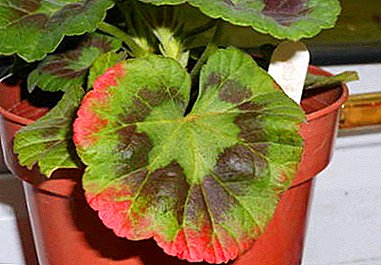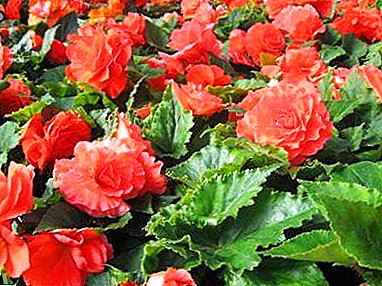
Garden tuberous begonias are heat-loving plants and are not able to transfer winter in open ground. For the period of cold rhizomes dig and determine storage. The next season's begonia will once again be covered with lush flowers with proper wintering.
Storage of the tuberous begonias growing in an open ground and in room conditions differs. How to save begonia for the winter, we consider in the article. You will learn about the features of care in the winter, whether you need to dig a plant and how to prepare it for the cold season. In addition, what is the difference between wintering tubers at home and in the open field.
Features of winter care
- Young plants are removed in the fall from the beds and put together with the soil clod in boxes with peat mixture. For the first-year begonias, the resting state is relative. In winter, their upper part remains green. Containers with flowers put in a bright and cold place. It is recommended to moisturize the earth once every 2 months.
- In adult flowers, the lower part dies by autumn. It is cut, the roots are dug, put in boxes with sawdust, peat or sand. Planting rhizomes are kept in a cool place until spring in the refrigerator or in the basement.
It is not recommended to store the tubers in the cellar due to high humidity. This has a very negative effect on plants.
Period of rest and awakening
 Rest or wintering at the tuberous begonias begins in November and lasts until the beginning of March. The florist should take care of the planting material: save it and prevent it from drying out. To do this, follow certain rules:
Rest or wintering at the tuberous begonias begins in November and lasts until the beginning of March. The florist should take care of the planting material: save it and prevent it from drying out. To do this, follow certain rules:
- You can not send begonias to rest in early autumn. To prepare for the winter, they must gain enough nutrients.
- You need to dig up the tubers in late October - early November (before the onset of serious frosts).
In late March - early April, buds sprout and begonia awakens. This is the right time to graft and plant a plant:
- 2 months before planting, the tubers are removed from the container in which they wintered, and placed in a pot for germination.
- Roots planted up top.
- Tubers are germinated in a room with a temperature regime not lower than +18 degrees.
- Watered daily. Within a few weeks sprouts will appear.
- Before planting can be divided tubers. Each half must have kidneys. Places cuts sprinkled with coal powder.
- Gerbed begonias are placed on the beds not earlier than the beginning of June. Choose a place well protected from direct solar flux and wind.
The difference between wintering at home and in the open field
Care of tubers of garden and house plants has differences. To properly prepare them for wintering, take into account the characteristics.
Rules for handling outdoor growing begonias:
- Flowers are removed from the garden with the arrival of the first strong frosts. There is no need to hurry to dig out during light frosts - begonias suffer a short-term decrease in temperature.
- When the plant has dried stems and leaves, they are cut.
- Tubers are removed from the ground, put in a box and put to dry.
- A container with planting material is placed in storage until spring.
With room begonias do differently:
- Their tubers do not need to dig - the plants are in their pots.
- The stalks are pruned as soon as they start to fade.
- Watering is reduced to a minimum.
- The flower is transferred to a cool place.
- So that the earth does not completely dry, it is periodically moistened.
In spring, the tubers are transplanted into a fresh substrate.. If there are many buds, they are divided into several fragments.
Sometimes room begonia stays green all winter. The flower is left in its place until spring, then transplanted.
- tuberous;
- ampelous;
- Bolivian.
Is it necessary to dig?
 To garden culture survived the winter, the tubers are dug only when strong frosts occur.
To garden culture survived the winter, the tubers are dug only when strong frosts occur.
Autumn is an important stage in the life of begonias. During this period, it should stock up on nutrients, increase tubers, form flowering buds.
Answering the question "whether to dig up begonia for the winter," its condition and appearance are taken into account:
- Large street tubers after wilting removed from the ground.
- Large roots of home culture is left for the winter in its place.
- Flowers with small nodules and germinated from seeds are dug out and placed in a cool lighted place.
The flower grower should not be in a hurry to send outside plants for wintering at the first minor frosts. But it is also impossible to delay.
Preparation of a tuberous plant for storage until spring
Begonias growing in the garden, dug before the onset of severe frost. The foliage on them finally fly over, and the stalks dry out.
Tubers are recommended to be removed from the ground with forks. Earth from the roots do not shake.
Features of the preparation of plants for winter:
- Tubers are dried in a dry cool place.
- Placed in a special container: in boxes or in paper bags.
Planting material is stored until spring at a temperature of + 7-9 degrees.
Features of wintering room begonias other:
- For peace it is prepared in October.
- Reduce moisture and stop completely after a month.
- The top of the flower is cut off after withering. If it does not dry out, leave it in this form.
Methods and storage conditions
There are three methods to save the tuberous begonia: in the basement, in the apartment, in the refrigerator. The most popular wintering method for tubers is in the basement:
- Dried planting material is placed in wooden boxes or in boxes.
- Top sprinkled with sawdust and send to rest.
- Roots from time to time sort out and remove rotten parts.
In an apartment under the tubers allocate space in the coldest room, for example, on the balcony or under the window.
There are 2 storage options:
- In pots. Flowers growing in indoor conditions are cut and placed in a cold place.
- In the box. Tubers are placed in a container, sawdust or sand is poured on top.
 Once a month, the root system is examined for signs of disease.. Can be lightly sprayed with an atomizer.
Once a month, the root system is examined for signs of disease.. Can be lightly sprayed with an atomizer.
In the refrigerator, the tuberous material is stored when it is small:
- The roots are put in a plastic bag with sawdust. There must be holes in the bag.
- Another way is to wrap each tuber in a sheet of paper and place it in a refrigerator in a compartment designed for fruits and vegetables.
Wintering begonias will be correct if you adhere to the following rules:
- Do not plant the plant before the hibernation period ends. It lasts until the end of February.
- It is desirable to leave the planting rhizomes in storage in boxes of sand.
- Be sure to inspect the roots and turn them over. If there are rotten places, they are removed. Sections are covered with wood ash.
Before planting the tubers must germinate.
- Why the tuberous begonia does not bloom and what to do?
- How to propagate the tuberous begonia cuttings?
- The basic rules for the care of tuber begonia.
- How to grow ampelous begonia from cuttings and seeds?
- What plant ampelous begonia and how to care for it?
- Types of reproduction of tuberous begonia and further care of the plant.
Proper wintering guarantees rapid development and wild bloom of the room tuberous begonia for the next year. To save garden plants, they must be dug out so that they do not die. Remove the tubers from the ground carefully, avoiding damage.


